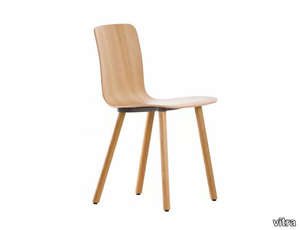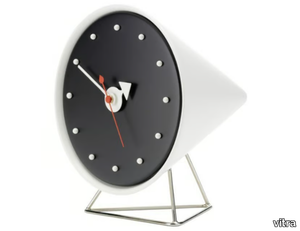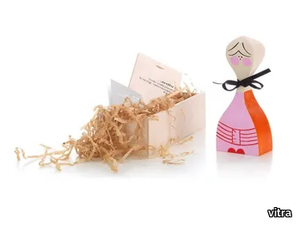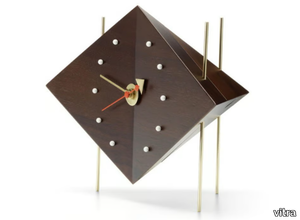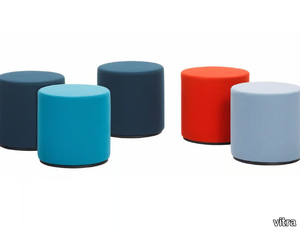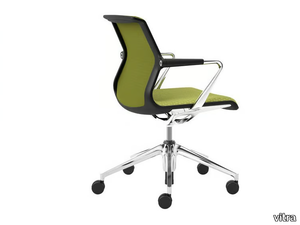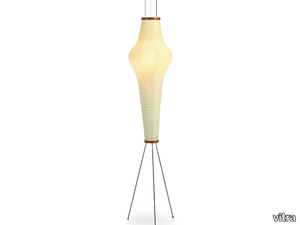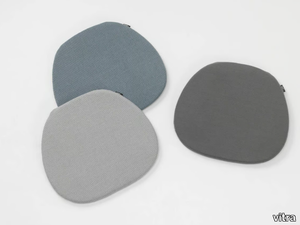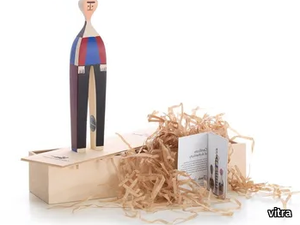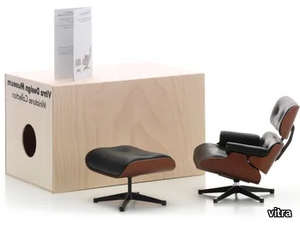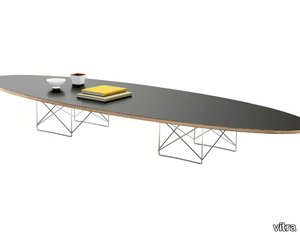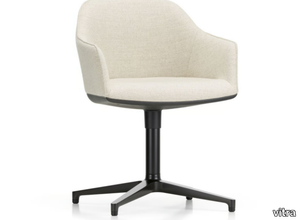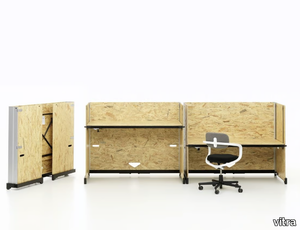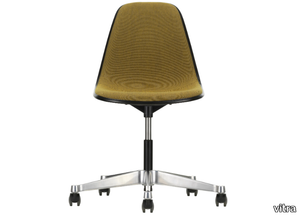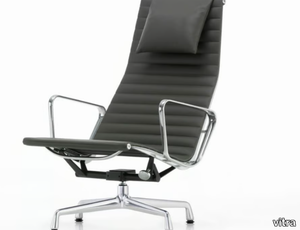NesTable

vitra > Styling
The need for private spheres and quiet places to concentrate has been recognised in today's open space office environments. Sofa lounges and comfortable seating areas are now readily provided - but how do you work in a lounge chair? By using NesTable with its fully adjustable platform height and inclination. Thanks to the shape of its base, this versatile table can be drawn up closely to most types of seating.
Akari 1AG
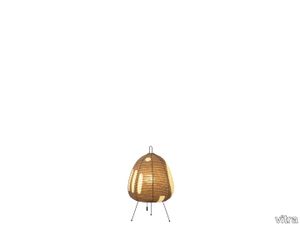
vitra > Styling
The Akari Light Sculptures (1951) by Isamu Noguchi are a series of luminaires, handcrafted from traditional washi paper by Japanese artisans. ‘The harshness of electricity is thus transformed through the magic of paper back to the light of our origin – the sun.’ (Noguchi)
Hang it all
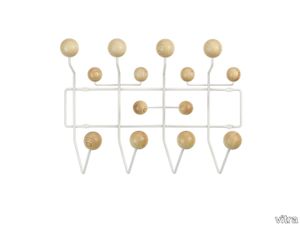
vitra > Styling
The 'Hang it all' coat rack designed by Charles and Ray Eames, which comes in a variety of colour combinations, encourages children to literally hang up all their things. With its colourful wooden balls, 'Hang it all' is a cheerful alternative to conventional coat hooks – and not just in children's rooms.
Chaise Tout Bois
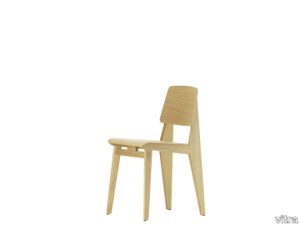
vitra > Chair
Chaise Tout Bois is the only chair by the French 'constructeur' and designer Jean Prouvé that is made entirely out of wood. The design is very similar to Prouvé's famous Standard chair, but wood was substituted for the metal base due to the scarcity of metal during the Second World War. The form of the Chaise Tout Bois articulates Prouvé's intention to provide added strength at the transition point between the seat and backrest, where the load weight of the human anatomy is greatest. The profile of the rear frame section – back legs and backrest support – makes reference to this load transfer and is a typical characteristic of Prouvé's designs for both furniture and architecture.<br/><br/>Prouvé created several prototypes of this chair during the war for the purpose of testing its structural strength as well as the joints, leg position and connection between the seat and back. The chosen type of wood depended on what was available at the time. After the war, there was once again a sufficient supply of oak, which due to its hardness and strength was commonly used in France to construct ships and cathedral roofs. As these properties are also ideal for an all-wood chair, the Chaise Tout Bois was ultimately made out of oak and plywood – also offered in dark-stained versions when requested by Jean Prouvé's customers.<br/><br/>In 1947, Prouvé won an award for the Chaise Tout Bois in the 'Meubles de France' competition. The concept of the competition was to find attractive, high-quality, mass-produced furnishings to meet the post-war needs of society – particularly refugees and young married couples. Later the Chaise Tout Bois was replaced by a knock-down version in metal and wood, which was then supplanted by Model No. 305, likewise combining a metal base with a wooden seat and backrest – known today as the Standard chair.<br/><br/>Chaise Tout Bois by Vitra corresponds to one of Jean Prouvé's design variants from 1941, whose construction does not require a single screw. The height and seat geometry are the same as those of the Standard chair and thus meet current norms and requirements. The warm look and feel of wood contrasts appealingly with the practical structural design, which is typical of Prouvé's functional approach. Chaise Tout Bois is available in light oak or dark-stained oak.
Potence

vitra > Styling
Designed as a pivoting wall lamp for the 'Maison Tropique', Potence (1950) is regarded as one of Jean Prouvé's puristic masterpieces. The dimmable luminaire is over two metres long.
Akari 45X
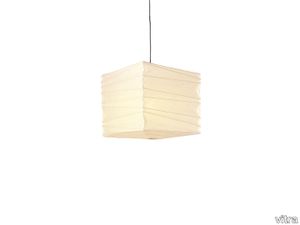
vitra > Styling
The Akari Light Sculptures (1951) by Isamu Noguchi are a series of luminaires, handcrafted from traditional washi paper by Japanese artisans. ‘The harshness of electricity is thus transformed through the magic of paper back to the light of our origin – the sun.’ (Noguchi)
Unix Chair, cantilever

vitra > Chair
The practical, robust Unix Chair by Antonio Citterio is the ultimate all-rounder. The cantilever chair flexes comfortably under the user and is ideal for for visitor and conference settings.
HAL Ply Wood
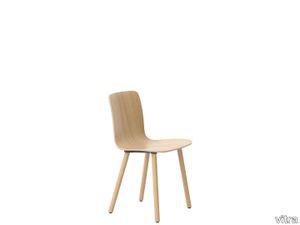
vitra > Chair
HAL Ply Wood is a wooden chair with a robust connecting plate beneath the shell. This design by Jasper Morrison combines a comfortable seat shell with a distinctive four-legged base. The seat and legs of the chair are available in various types of wood with matching finishes. HAL Ply Wood can be used together with other chairs in the extensive HAL family.
Akari 70EN
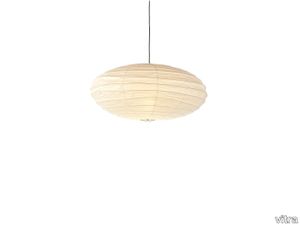
vitra > Styling
The Akari Light Sculptures (1951) by Isamu Noguchi are a series of luminaires, handcrafted from traditional washi paper by Japanese artisans. ‘The harshness of electricity is thus transformed through the magic of paper back to the light of our origin – the sun.’ (Noguchi)
Eames Plastic Armchair DAR
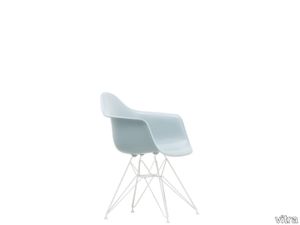
vitra > Chair
Since the early 1950s, when Charles and Ray Eames developed their Plastic Chairs, these furnishings have become icons of American mid-century modernism. In particular, the DAR chair (Dining Height Armchair Rod Base) stands out as an inimitable classic design combining light, elegant forms with structural strength in the intricate steel wire construction of its 'Eiffel Tower' base.
HAL Beam Seating
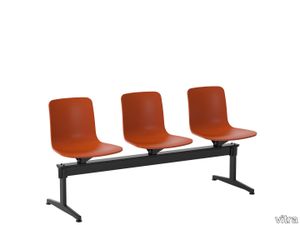
vitra > Bench
HAL Beam Seating is a robust solution for all types of waiting areas – from airports, train stations, foyers or lobbies to waiting rooms in a medical practice. Thanks to the understated design of the easy-care RE seat shells moulded from recycled plastic or in a plywood version, HAL Beam Seating is compatible with many different interior styles.
Embroidered Pillows - Home Sweet Home, light grey

vitra > Styling
Alexander Girard attracted a great deal of attention with his interior design of the legendary Miller House, for which he personally selected each individual object. The centrepiece of the house was a so-called 'conversation pit', a sunken seating area outfitted with decorative pillows made specifically for this setting. The embroidered pillow 'Home Sweet Home' is pleasantly firm and elaborately stitched.
Akari UF4-33N
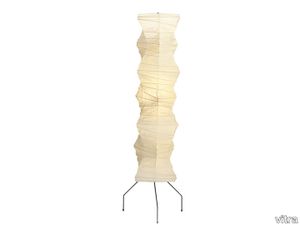
vitra > Styling
The Akari Light Sculptures (1951) by Isamu Noguchi are a series of luminaires, handcrafted from traditional washi paper by Japanese artisans. ‘The harshness of electricity is thus transformed through the magic of paper back to the light of our origin – the sun.’ (Noguchi)
Soft Seats type A
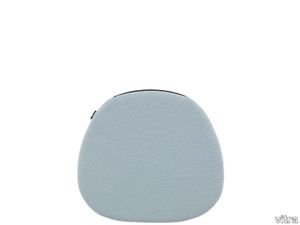
vitra > Styling
Available in three shapes, the Soft Seats by Vitra are made of a recyclable thermopressed fleece and provide soft comfort on unupholstered chairs - including outdoors with the Soft Seats Outdoor version.
Miniatures B3 Wassily
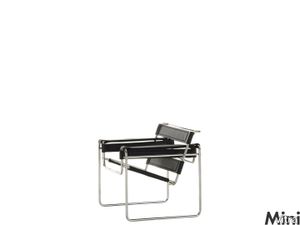
vitra > Styling
Marcel Breuer was one of the most important designers of the early modern age. His biography is closely linked to the history of the Bauhaus, founded by Walter Gropius in 1919. The club chair B3, known today as »Wassily« was also created in connection with this renowned institution. lt is the first piece of seating furniture in the history of design to be made from seamless, precision-drawn tubular steel. lts transparency and visible structure are expressions of the stringent aesthetic approach that prevailed in architecture and design following World War I. <br/><br/>Marcel Breuer replaced the massive upholstered corpus of the traditional club chair with a skeletonlike construction made out of bent steel tubing, thereby overcoming the physical weightiness of conventional seating. He exploited the elasticity of the material, complementing it with tautly stretched fabric strips of reinforced canvas for the seat and back. The B3 did not acquire the name »Wassily« until the beginning of the sixties, when the Italian furniture producer Dino Gavina purchased the manufacturing rights: Marcel Breuer had designed the armchair for the house of the painter Wassily Kandinsky, who taught at the Bauhaus from 1922 until 1933.
Miniatures Hill House 1
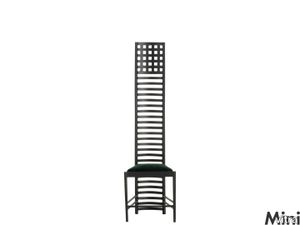
vitra > Styling
Charles Rennie Mackintosh was one of the great representatives of Art Nouveau. Together with his wife Margaret McDonald, her sister Frances, and his brother-in-law Herbert McNair, he developed an original style that set itself apart from the decorative floral style of Jugendstil. The group's geometric, almost cubist designs for furniture show the influence of Japanese spacial concepts and are distinguished by their elongated, severe forms. A typical aspect of their work is a formal scheme based on horizontal and vertical lines, occasionally combined with slightly curved linear ornamentation. <br/><br/>Hill House 1 marks a new phase in the work of Mackintosh. The chair´s strict geometry recalls the Ladderback Chairs of the Shakers and clearly differs from the organic or feminine forms of early designs. It was made for the house of a Scottish publisher and his wife and functioned more as part of an artistic environment than as a piece of furniture for everyday use. The chair was assigned a set place in the bedroom of the couple, where it fulfilled a purely decorative function. The extended back, first used by Mackintosh in 1897, is a motif that appears repeatedly in his chairs and gives them an unmistakable quality.
Miniatures Schaukelsessel No. 9
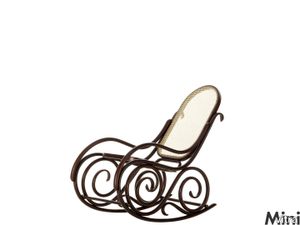
vitra > Styling
In the second half of the 19th century bentwood firms began to manufacture rocking chairs which, as a symbol of leisure and relaxtion, corresponded to the need of the bourgeoisie for an appropriate level of comfort.<br/><br/>Around 1882 the firm of Jacob & Josef Kohn put a model onto the market which differentiated distrinctly from earlier rocking chairs. A double loop, which clearly stands out against the framework, unites the supporting functions on either side. As a result of the back-leg-like supports of the prototypes like the Thonet rocking chair being replaced by smaller bentwood loop at the back, the construction of the chair takes on an elegant and weightless appearance. The firm, founded in 1867, had initially mainly copied Thonet furniture. Innovatory drafts, such as the Rocking Chair No. 9, helped the business to develop its own original style.<br/>
Wall Clocks - Eye Clock
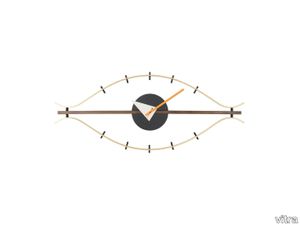
vitra > Styling
With his collection of Wall Clocks (1949-1960), George Nelson conceived a wide array of timepieces, many of which have since become icons of 1950s design.
Plywood Mobile, Model A

vitra > Styling
The Plywood Mobiles, whose shapes are strongly reminiscent of Ray's artwork and graphics, were hung from the ceiling of the Eameses' apartment in Los Angeles.
Chap

vitra > Stool
Chap (2021) is adaptable and versatile. The quality of its design lies in its generic appearance and universal applications, which are also the reasons why it cannot be limited to a specific function.
Eames Plastic Side Chair beam seating
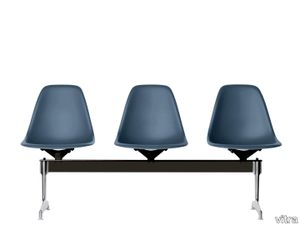
vitra > Chair
Designed by Charles and Ray Eames, the family of Plastic Chairs combines superb comfort and robust quality with a timeless aesthetic. Since the Side Chairs meet the stringent demands of seating for public waiting areas, they are also available on base beams in a variety of different lengths. Configuration options include small table elements, which can be mounted between the seat shells.
Girard Ornaments - Rabbit
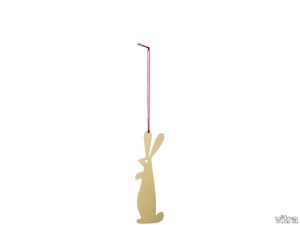
vitra > Styling
The range of motifs does not limit the use of Ornaments by Alexander Girard to seasonal occasions but a number of them are perfect, for example, for Christmas time.
MedaMorph folding table

vitra > Table
Thanks to its castor base and simple flip-up folding mechanism, the MedaMorph folding table is not only easy to move around, but also requires little space for storage. This version of the comprehensive table system is thus particularly well-suited for dynamic, ever-changing environments that are adapted by users themselves to fulfil their current requirements. The MedaMorph folding table is available in two sizes.
Wooden Doll No. 1 super large
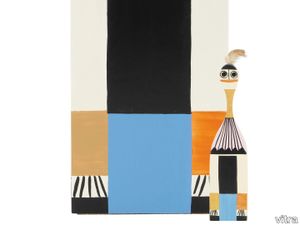
vitra > Styling
The ‘super large’ version of Wooden Doll No. 1 is enlarged to a scale of 4.15:1 and measures approximately 80 centimetres in height. Like the smaller models, the super large Wooden Dolls are crafted and painted by hand – true to the originals by Alexander Girard. The super large Wooden Dolls are numbered and limited to 1000 pieces per model.
Environmental Wall Hanging - Love Heart

vitra > Styling
Beginning in 1971, Alexander Girard developed a series of wall panels with diverse, expressive motifs. Recently reissued by Vitra, the Environmental Wall Hangings make attractive wall decorations for any room.
Slow Chair
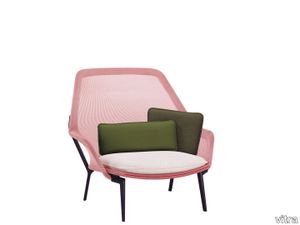
vitra > Chair
Despite its generous proportions, the Slow Chair by Ronan and Erwan Bouroullec has a lightweight, understated aesthetic, thanks to the armchair's translucent high-tech knit sling cover and graceful contours. The Slow Chair comes in a range of colours with matching cushions.
Soft Modular Sofa four-seater, platform, Chaise Longue
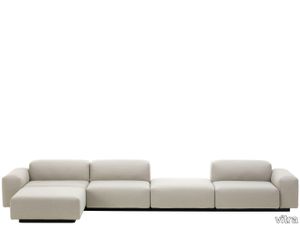
vitra > Sofa
With carefully balanced proportions, great comfort and a conscious renunciation of decorative details, the Soft Modular Sofa (2016) by Jasper Morrison unites the characteristics of a modular lounge sofa in its purest form.
Wall Clocks - Sunflower Clock
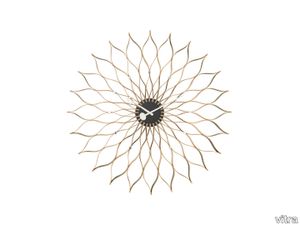
vitra > Styling
With his collection of Wall Clocks (1949-1960), George Nelson conceived a wide array of timepieces, many of which have since become icons of 1950s design.
